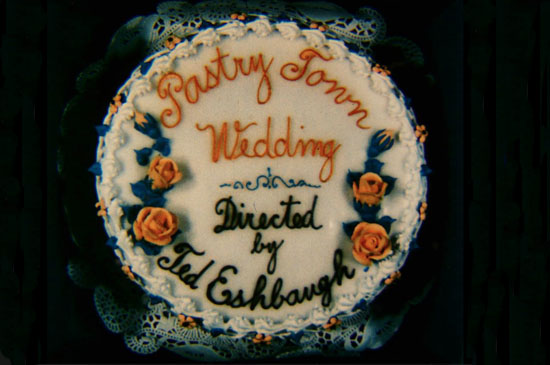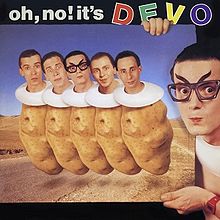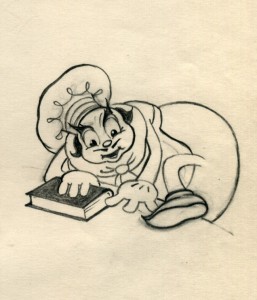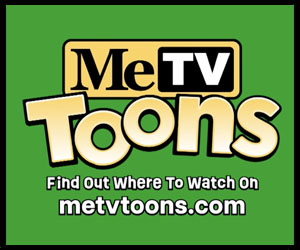
It’s a short ‘Thunderbean Thursday’ this week as I work on catching up with everything here. The new title, Odds and Ends, was released last week, and the orders, along with others, have us very busy. We’re still trying to catch up from everything including other pre-orders, but getting there quickly. We’ll give an update next week on all sorts of things…. Including a few surprises.
We’ve started to work heavily on Puppetoon archeologist Arnold Leibovit’s next Blu-ray, cleaning up some absolutely beautiful and rare Puppetoon material. I had planned to do this week’s article on just this project, but we’ll have to do that next week — there’s just too much to cover at this point on the project. It’s a wonderful mix of early materials as well as some of the Paramount Puppetoons. I can’t wait to show some of what we’ve been helping with.
The first volume of the Rainbow Parade is nearing completion, and work is going very well on the bonus materials. I love how the set is turning out. It won’t be perfect, but I’m so happy we’ve found what we have at this point. The collectors and archives are key to the resurrection of this series in HD.

The first of the series was Pastrytown Wedding. It’s one of my favorites, from the enjoyable music to the oddly angry looking (and Devo-esque) of Pastrytown. Research on the series (and in Van Beuren’s productions in general) is spotty at best, and production records long missing. This leaves us to speculate on some aspects of the history.
 I’m guessing that the second cartoon in the series, Parrotville Fire Department, might actually be the first, and that its release was postponed, perhaps even postponing the series until Pastrytown was finished. I’m guessing that Parrotville Fire Department may have even been produced around the time of the black and white ‘Toddle Tales‘.
I’m guessing that the second cartoon in the series, Parrotville Fire Department, might actually be the first, and that its release was postponed, perhaps even postponing the series until Pastrytown was finished. I’m guessing that Parrotville Fire Department may have even been produced around the time of the black and white ‘Toddle Tales‘.
What is clear is that when Van Beuren folded, the cartoons were sold to a few different companies. I’ve covered some of that here in the past, but here’s a recap: Walter O. Guthlohn, the first real 16mm rental company, purchased the library in 1936, selling and leasing prints around the country. Gutlohn himself died that same year by some records (1938 in others), but the films themselves were branded with his name and distributed with his title cards into the early 60s, either by the Gutlohn company or Commonwealth films.
 Gutlohn’s acquisition seems to include a majority (but not all) of the Van Beuren b/w output from 1930 to 1934, then the first half of the Rainbow Parade series. Commonwealth films seems to have purchased the later half of the library either by purchasing Gutlohn, or, more likely, having some long term lease on the material. Either way, what is clear is that Commonwealth did acquire at least the second half of the series in 1941. From the paper records at UCLA, it is unclear if Gutlohn sold or leased the first half of the series to Commonwealth, but at some point Commonwealth ended up with the whole series. Eventually, Gutlohn was bought or became Library Films- and perhaps Library films w as acquired by Commonwealth. Teleprompter also owned the material before it was sold to Eastin in 1960.
Gutlohn’s acquisition seems to include a majority (but not all) of the Van Beuren b/w output from 1930 to 1934, then the first half of the Rainbow Parade series. Commonwealth films seems to have purchased the later half of the library either by purchasing Gutlohn, or, more likely, having some long term lease on the material. Either way, what is clear is that Commonwealth did acquire at least the second half of the series in 1941. From the paper records at UCLA, it is unclear if Gutlohn sold or leased the first half of the series to Commonwealth, but at some point Commonwealth ended up with the whole series. Eventually, Gutlohn was bought or became Library Films- and perhaps Library films w as acquired by Commonwealth. Teleprompter also owned the material before it was sold to Eastin in 1960.
Both black and white and color cartoons from Van Beuren were licensed to Official Films, including the first half of the Rainbow Parade series. The negatives to a majority of Van Beuren’s negatives are lost at this point. Several have shown up in Columbia’s negatives, including the camera negatives for Piano Tooners (1932) and Marching Along (1934). Where the lion’s share went remains a mystery.
Somewhere along the way, Ted Eshbaugh must have acquired the rights to two of the films he directed at Van Beuren. They appear to have both been sold in the early 40s as commercials. It is understandable that many people thought that ‘The Sunshine Makers’ was actually made for Bordon’s, since those were the only color prints in circulation. Pastry Town Wedding is also quite rare in color.
 Eshbaugh’s personal prints of both The Sunshine Makers and Pastrytown Wedding are preserved in the very capable hands of the Library of Congress, and we’re happy to have been able to scan these from this material. Here is the ‘Cushman Brothers’ version of Pastrytown with new animation inserted. Years back, we scanned a 16mm Gutlohn Cinecolor print of the short in its original edit, and that’s the ‘main’ version of the short that appears on the set. We’re also including this version as well.
Eshbaugh’s personal prints of both The Sunshine Makers and Pastrytown Wedding are preserved in the very capable hands of the Library of Congress, and we’re happy to have been able to scan these from this material. Here is the ‘Cushman Brothers’ version of Pastrytown with new animation inserted. Years back, we scanned a 16mm Gutlohn Cinecolor print of the short in its original edit, and that’s the ‘main’ version of the short that appears on the set. We’re also including this version as well.
It seems clear that Eshbaugh licensed at least Pastrytown Wedding to Official Films, as well as Cap’ Cub. The black and white copies of the film have the Cushman’s footage in the second half of the cartoon, but its missing the earlier in the film ’new’ footage.
My great hope was that somehow the original titles would materialize on this film, but so far, no luck. If somehow you have them buried amongst your own collection (next to your print of London After Midnight) please share it with the world. My guess is that they belong to the ages.
Have a good week everyone!


 Steve Stanchfield is an animator, educator and film archivist. He runs Thunderbean Animation, an animation studio in Ann Arbor, Michigan and has compiled over a dozen archival animation DVD collections devoted to such subjects at Private Snafu, The Little King and the infamous Cubby Bear. Steve is also a professor at the College for Creative Studies in Detroit.
Steve Stanchfield is an animator, educator and film archivist. He runs Thunderbean Animation, an animation studio in Ann Arbor, Michigan and has compiled over a dozen archival animation DVD collections devoted to such subjects at Private Snafu, The Little King and the infamous Cubby Bear. Steve is also a professor at the College for Creative Studies in Detroit.






















Steve:
The original RKO titles of PASTRY TOWN WEDDING DO exist. Here’s a you tube upload of the original: https://www.youtube.com/watch?v=CkK1kTFw_xAl version I
Sure it’s a third generation looking print, but maybe it’ll assist your crew in the restoration.
Can hardly wait for this set and Flip even more so.
I hope you include both version on the set. The Cushman version is neat in it’s own way.’
No – that isn’t the original title for Pastrytown Wedding. That’s a recreation using the three-strip Technicolor ‘Rainbow Parade’ title card and the Gutlohn card for ‘Pastrytown’.
Can’t you combine volume 1 and 2 of rainbow parades into one collection after cleanup is finished for those who DIDN’T pre order, After all you said the pre-order would contain ALL the rainbow parades….
Some of the Van Beuren cartoons were sold to Unity Pictures, which merged into Hygo (Samba Pictures). When Columbia/Screen Gems acquired Hygo’s library, they obtained their old cartoons and the Van Beurens.
Municipal government records state Gutlohn died in NYC on Dec. 11, 1936 and was cremated the next day. He was 48 years old.
So was Cinecolor an orange and blue two-color process so that the reds and greens are weird to nonexistent?